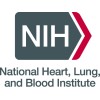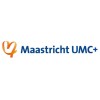
Clinical Course of Coronary Artery Disease Among Blacks
Cardiovascular DiseasesCoronary Disease2 moreTo determine the clinical course of coronary artery disease among Blacks receiving medical care for symptomatic heart diseases.

Worcester Heart Attack Community Surveillance Study
Cardiovascular DiseasesHeart Diseases2 moreTo examine time trends in the incidence rates of acute myocardial infarction and out-of-hospital coronary heart disease deaths as well as changes in the in-hospital and long-term case-fatality rates of acute myocardial infarction in the Worcester, Massachusetts Standard Metropolitan Statistical Area (SMSA).

Artificial Intelligence to Assess the Association Between Facial Characteristics and Coronary Artery...
Coronary Artery DiseaseThe purposes of this study are 1) to explore the association between facial characteristics and the increased risk of coronary artery diseases; 2) to evaluate the diagnostic efficacy of appearance factors for coronary artery diseases.

CES1 Carriers in the PAPI Study
Heart DiseasesCoronary Disease9 moreThis study builds, in part, upon preliminary results generated as part of the Pharmacogenomics Anti-Platelet Intervention (PAPI) Study (NCT00799396). The purpose of this investigation is to assess the impact of genetic variation in the carboxylesterase 1 (CES1) on response to clopidogrel as well as dual antiplatelet therapy (i.e. clopidogrel and aspirin), as assessed by ex vivo platelet aggregometry, in healthy Amish individuals. The investigators hypothesize that participants who carry alleles that modify the activity or expression of CES1 will have altered response to clopidogrel as well as dual antiplatelet therapy.

Biomarker Effectiveness Analysis in Contrast Nephropathy (BEACON)
Acute Renal FailureKidney Diseases2 moreThis study is an observational non-interventional study which will examine a) the accuracy of biomarkers in predicting renal and cardiovascular outcomes after contrast-induced acute kidney injury. This study will obtain de-identified human plasma & urine samples and corresponding de-identified research study data on subjects who are enrolled into the Prevention of Serious Adverse Events Following Angiography (PRESERVE) study and Biomarker Collection and Analysis in the PRESERVE Trial (VA CSP #578). Biomarker analyses will be performed on the de-identified samples and merged with de-identified research study data.

System Delay and Clinical Outcome Among Chinese Patients With AMI Treated With Reperfusion Therapy...
Coronary Heart DiseaseAcute myocardial infarction (AMI) pose a pool clinical outcome to men and women whom treatment was delayed. However, reperfusion time was limited in previous studies. To evaluate the system delay and clinical outcomes among Chinese patients with AMI, consecutive inpatient case prospectively collected from 1999 to 2016. Basic data and innovative evidence will accelerate evidence-based clinical practice and policy making, and improve AMI patients outcomes finally.

Genoss DES Prospective Multicenter Registry
Coronary Artery DiseaseMyocardial Ischemia1 moreThis registry is a clinical post-market evaluation of the Genoss DES in subjects requiring coronary revascularization with Drug Eluting Stents (DES).

Routine Or Selective Stress Testing After Revascularization: ROSSTAR Trial RCT Outline
Coronary Heart DiseaseCoronary Artery DiseaseThe ROSSTAR trial is a pragmatic trial that will directly compare the strategies of routine and selective stress imaging testing (with radionuclide imaging (RNI)) late after PCI or CABG in asymptomatic patients. The study will be a single center trial based at the Jewish General Hospital (JGH), a McGill University teaching hospital (Montreal, Quebec). A total of 1100 patients who are either >5 years post-CABG or >2 years post-PCI will be randomized. Half of the patients will be randomized to a routine RNI testing, and the other half to selective RNI testing.

Prospective Multicenter Registry On Radiation Dose Estimates Of Cardiac CT Angiography in Daily...
Coronary Artery DiseaseCoronary Disease3 moreBackground: CCTA is a common way to evaluate coronary artery disease. It stands for coronary computed tomography angiography. It uses scanning to look at the arteries that supply blood to the heart. It is noninvasive, widely available, and generally accurate. But it does expose people to radiation. Exposure to high amounts of radiation can increase a person s risk of getting cancer. Researchers want to learn more about the relationship between CCTA and radiation exposure. Objective: To see how much radiation is used to take pictures of the heart and how measures to reduce radiation are used around the world. Eligibility: People ages 18 years and older who need a computed tomography (CT) scan of the heart Design: Participants will be screened with a review of their medical records. Participants may have a pregnancy test. Participants will have the scheduled scan. Small, sticky discs will be placed on the chest. A small tube will be placed into a vein in the arm. A contrast material (dye) will be given through it. Participants will lie on the CT scanning table. A CCTA scan usually takes about 15 minutes if the heart rate is slow and steady.

18F-fluorocholine PET-MR Imaging of Coronary Plaque Vulnerability
Myocardial InfarctionMyocardial Ischemia5 moreThis study is designed as a prospective observational feasibility study. The investigators will study whether vulnerable plaques on OCT (fibrous cap ≤ 70 μm) show a locally increased uptake of 18F-choline on PET-MRI compared to stable plaques and whether the culprit plaque shows a locally increased uptake of 18F-choline on PET-MRI compared to non-culprit plaques. First, 15 NSTEMI or STEMI patients who underwent urgent percutaneous coronary intervention (PCI) of the culprit vessel, who are diagnosed with multivessel coronary disease and are currently scheduled for a second PCI at the VieCuri hospital will be included. These patients will be subjected to an additional 18F-choline PET-MRI examination at the MUMC+ and an additional optical coherence tomography (OCT) examination (during the PCI procedure at the Viecuri hospital). OCT will be performed as a reference standard to validate 18F-choline PET-MRI for detection of vulnerable plaques in the coronary arteries. In addition, 15 NSTEMI patients, who are scheduled for PCI of the culprit lesion at the MUMC+, will be subjected to an additional 18F-choline PET-MRI examination at the MUMC+. Hereby, the culprit coronary vessel and thereby the culprit plaque can be identified by the location of the myocardial infarct, as identified by late enhanced MRI. The investigators will study whether the culprit plaque shows an increased 18F-choline uptake on 18F-choline PET-MRI compared to non-culprit plaques in the other coronary arteries. All patients will receive standard, guideline-based clinical care, while PET-MRI and OCT will be performed as additional measurements. Before the start of the study, 5 stable angina pectoris patients that are scheduled for a PCI procedure at the MUMC+ will be included at the MUMC+ for a single PET-MRI scan to optimize the parameters of the coronary PET-MRI scan.
